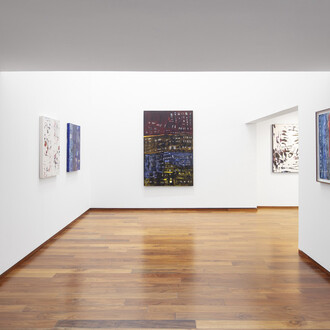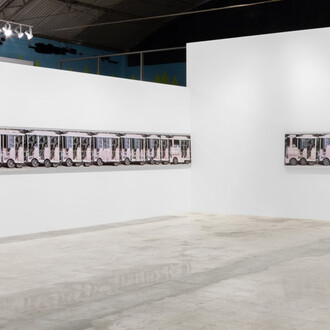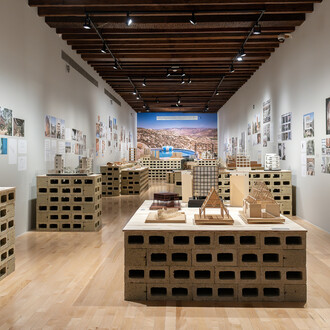Move on.
Intuition, that inner voice capable of perceiving the world unconsciously through the accumulation of knowledge and experience, runs through the work of Virginia Chihota (Zimbabwe, 1983).
In her work, an overwhelming force comes into tension with the need to find refuge. A safe space for art, protected as if it was inside a womb -an organ that tends to be associated with fertility in African art and that Virginia Chihota often draws – where the artist voluntarily isolates herself in order to name the unnamable, question the material conditions necessary for artistic production, explore spirituality, maternity, childrearing, and bereavement, and search for her identity, as an African woman and a woman artist. Her work, deeply introspective, connects with her personal, collective and ancestral memory, where the body -always in transformation- occupies a central place.
In this continuous dialogue with herself, the artist resorts mainly to silkscreen printing and drawing to then create a game in which she uses paint to generate textures and different layers with which she superimposes past, present and future.
Kuenda mberi. Moving on is a catharsis following the different migratory experiences that over the last decade have led the artist to reside in different countries such as Libya, Tunisia, Austria, Ethiopia and the USA; an expression of her experiences linked to displacement, isolation and the permanent need for reconstruction in the face of new realities and contexts, which is both a daily struggle and the possibility of a continuous rebirth as a woman and an artist.
Zvakwana manje (enough now), belongs to a series of works made between 2023 and 2024, in which she makes her first incursion into oil painting. In it she used the materials at her disposal due to a setback associated with her last change of residence – which prevented her from having her usual silkscreen printing equipment – in a desperate act where a series of figures seem to float, unable to find anchorage or take control. The birth reveals a body detached from itself, pushed by hidden forces. This unknown dimension seems to operate from the margins, establishing a continuous dialogue with what is happening inside. It is the artist herself who again and again submits herself to scrutiny, who has no choice but to be reborn and begin again.
Her works on paper become a way of reactivating her most familiar creative process -in every sense-, as they include layers of ink and silkscreen printing, which transforms them into sacred objects. In the large format work Hope dzekutama (The relocating dream), these techniques coexist on the canvas showing a multidimensional journey, in which life and death intertwine in front of a repetition of abstract gestures and ghostly presences that aspire to reveal the hidden and recall the indelible. Chihota’s artistic practice thus becomes a key that opens the doors to self-knowledge, exploring complex aspects of her being and of her life in community where the traditions of African art resonate, in which individuality and collectivity coexist.
(Text by Mónica Carroquino)
















